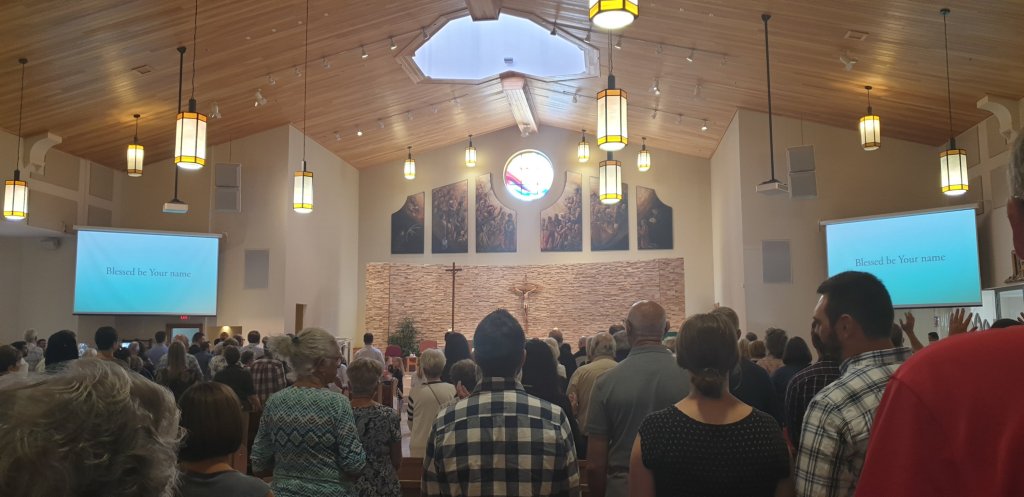I spent Sunday morning, August 11th, in St. Benedict’s parish. I participated in the 9am Mass. Afterwards I met with Dinah, who has responsibility for Worship, Sacraments and Disciple formation team. I dropped in on
I had a long and fruitful conversation with Dinah, specifically in relation to Sacramental Preparation. Our discussion was wide ranging, she has been involved there from before it was this single church and she is a great advocate for change. There is far too much to cover here, however a couple of critical points are worth mentioning:
- Everything is done with the Game Plan in mind.
- Adults are invited into an exploration of what it is they are asking for their children.
- There is no specific age for the Sacraments, the child receives the Sacrament when they are ready for it.
- Families must commit to taking part in the programme, which includes participation in Mass.
- If, for some reason during the programme, you miss out on some modules, then you complete these in the next programme.
- Numbers accepted into a programme are based on the resources available to run the programme, not on the numbers applying. If this one is full, you will have a space on the next one. (The programme for First Reconciliation and Communion is run twice each year)
- People who do not want to, or are not able to, commit to the programme are allowed to walk away.
- There is a clear path for involvement in the paish for all family members afer the Sacramental moment is celebrated.
- A key part of the programme is accompaniement, creating links within the faith community.
- Their numbers are small but they are seeing a high rate of continuity beyond the Sacramental moment.
I asked Dinah about what isn’t working, what changes she would make. She was able to list out many changes that they are making, ways they are trying to evolve their engagment and how they measure what they are doing. It struck me strongly of a system that is continually evaluating itself and learning.







